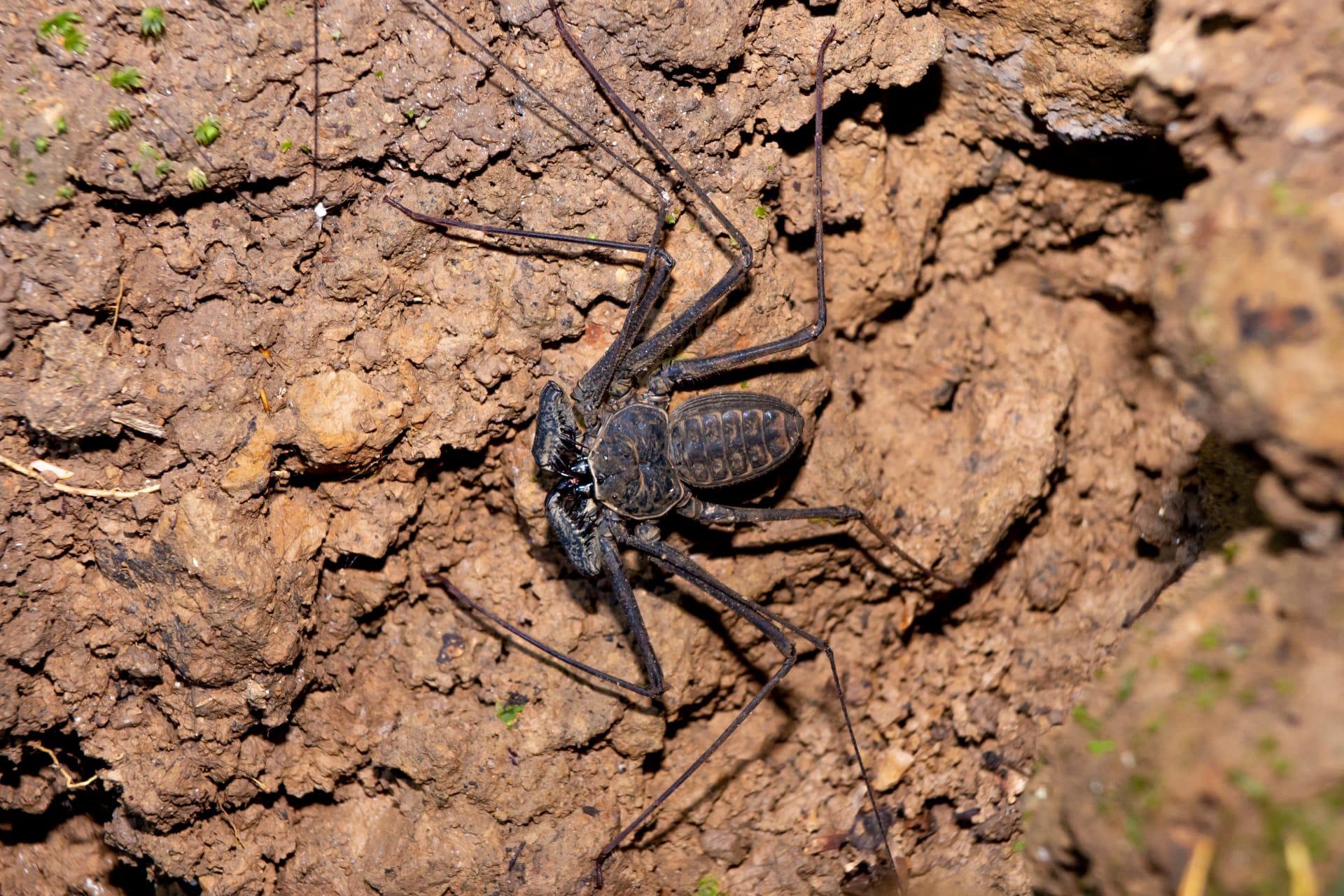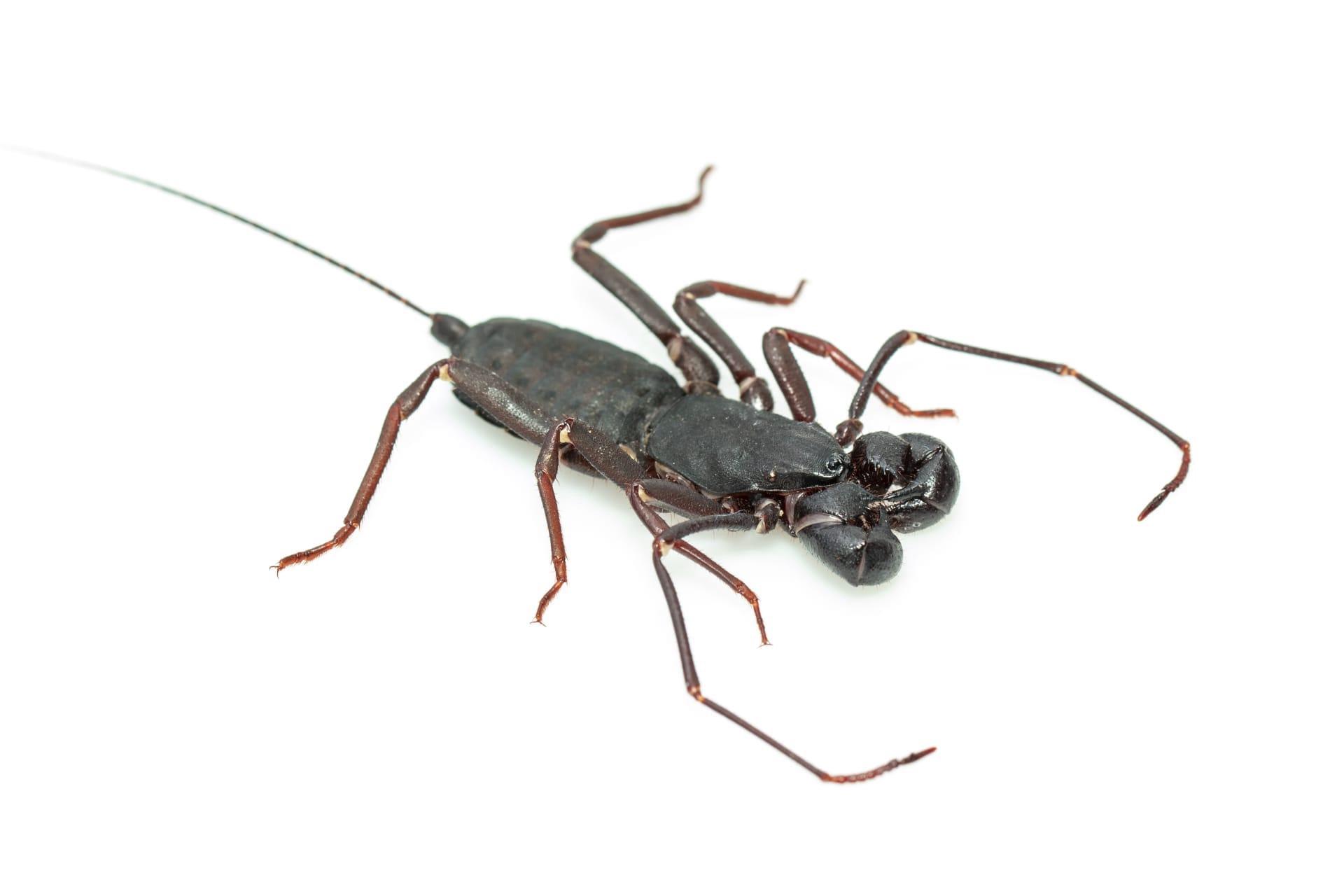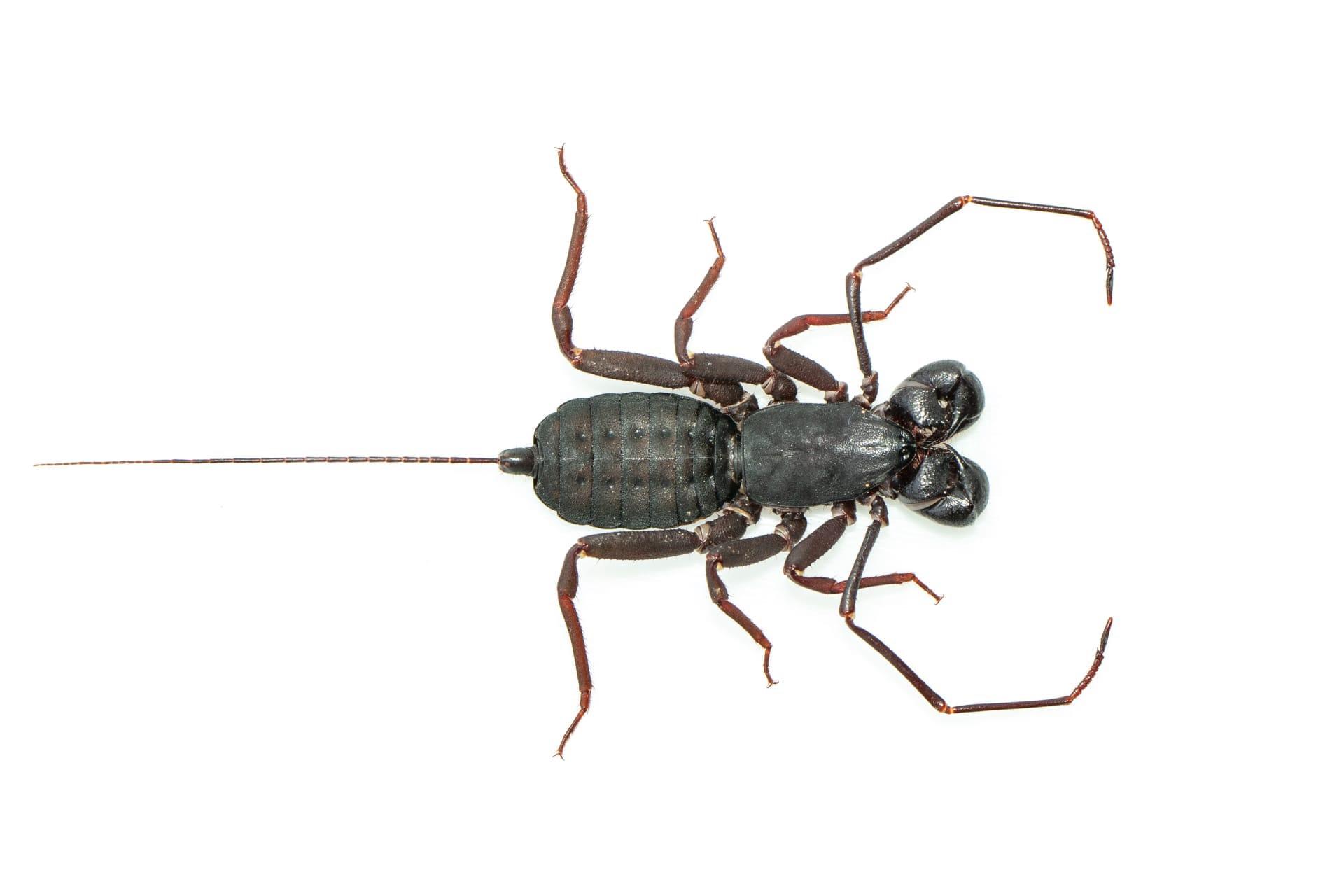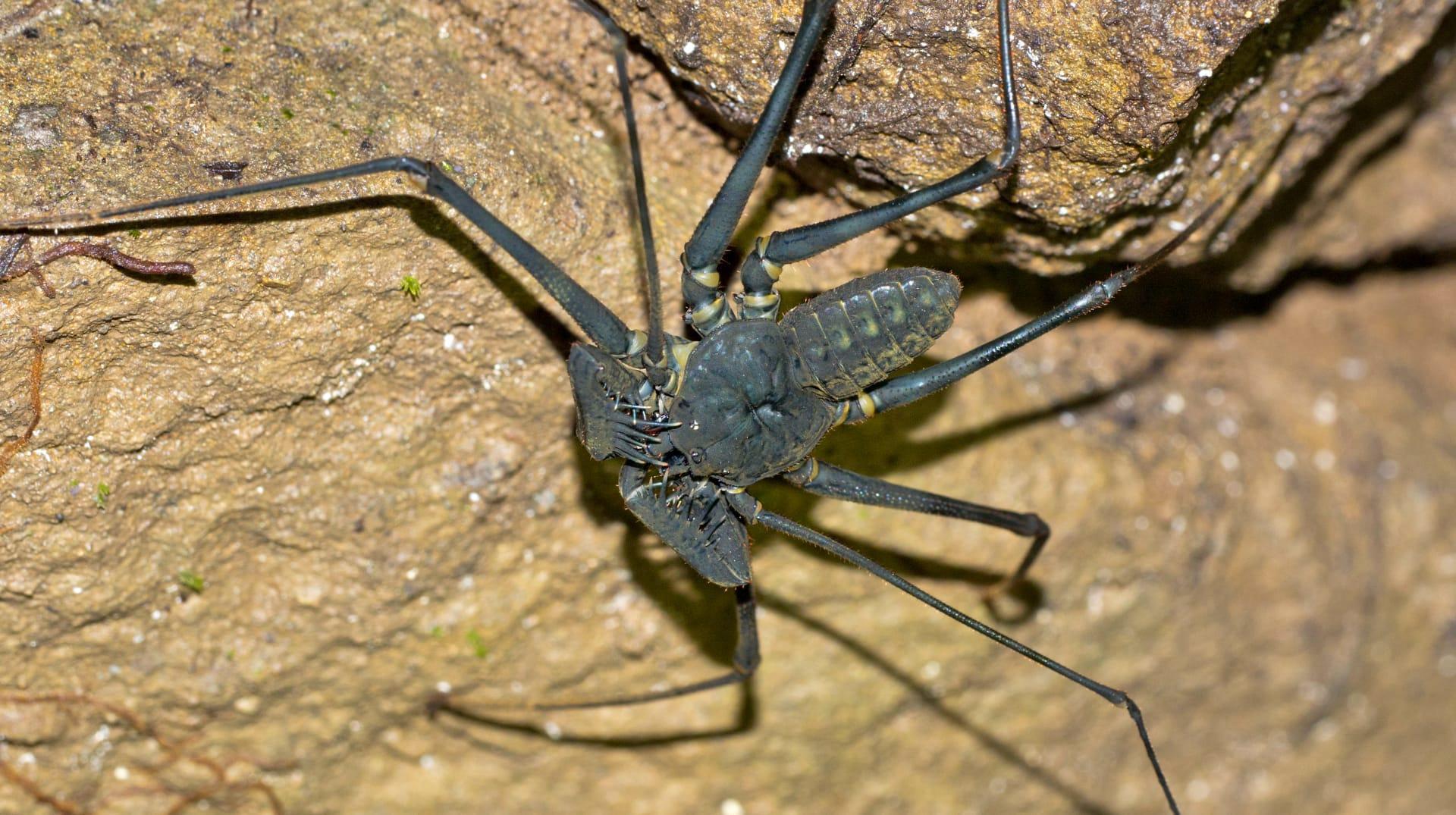Whip Scorpion Characteristics
- Home /
- Mini Encyclopedia /
- Animal /
- Whip Scorpion Characteristics
1
Whip scorpions, intriguing creatures indeed, boast a unique set of physical characteristics. Their body size varies, but most species average around 2 to 3 inches in length. Despite their daunting appearance, they lead relatively long lives for arachnids, with some living up to 7 years. These fascinating creatures are distinguished not just by their size and lifespan but also by their distinctive physical features.
The most remarkable organ of whip scorpions is undoubtedly their whip-like tail, technically known as a 'flagellum'. Unlike traditional scorpions, they don't use this appendage for stinging. Instead, it serves as a sensory organ. Measuring up to twice the length of their body, this flagellum is covered in fine hairs, enabling the whip scorpion to detect vibrations and chemical cues in its environment. This sensory prowess plays a crucial role in their survival, aiding in navigation and predator avoidance.

2
Question: Are whip scorpions venomous?
Answer: A common misconception about whip scorpions is that they are venomous like their scorpion cousins. In reality, whip scorpions are non-venomous. They lack venom glands entirely, and their primary defense mechanism is to spray a vinegar-like substance from glands located near the base of their tail. This acetic acid spray can be quite potent, capable of deterring predators and proving the whip scorpion's reputation as a harmless yet fascinating creature.

3
Movement in whip scorpions is as unique as their appearance. They are known for their ability to move sideways, just as efficiently as they move forward or backward. This lateral movement is aided by their long, spindly legs that provide both speed and maneuverability, crucial for escaping predators and navigating through their habitats.
As for hunting, whip scorpions employ a 'sit-and-wait' strategy. They are nocturnal hunters, using their extended front legs, which act as feelers, to detect prey in the dark. Once a potential meal is within reach, they use their pedipalps - large, pincer-like appendages - to grab and crush their prey, which typically consists of small insects and arthropods.

4
Whip scorpions are typically found in tropical and subtropical environments. They prefer humid, sheltered habitats such as under rocks, logs, or in leaf litter. These environments provide the necessary moisture for their survival and offer ample hiding spots to protect them from predators.
In terms of reproduction, whip scorpions exhibit fascinating behaviors. They perform a complex mating dance, where the male guides the female to a spermatophore he has deposited. The female then takes this spermatophore to fertilize her eggs. She carries the fertilized eggs in a brood sac attached to her abdomen, and once hatched, the young ride on their mother's back for a few weeks until they are ready to fend for themselves.

5
Book: "The Biology of Whip Scorpions" delves into the intricate world of these creatures. Published in the United States in the late 20th century, it's authored by Dr. Harold Maxwell, an esteemed arachnologist. This book covers a wide range of topics, from anatomy and behavior to ecology, offering readers a comprehensive view of whip scorpion biology.
Book: "Secrets of the Whip Scorpion," a more recent publication from the United Kingdom, is authored by Sarah Jennings. This book, released in the early 21st century, provides an accessible overview of whip scorpions for a general audience. It combines scientific facts with engaging narratives, highlighting the unique aspects of these creatures' lives, from their sensory adaptations to their reproductive strategies.